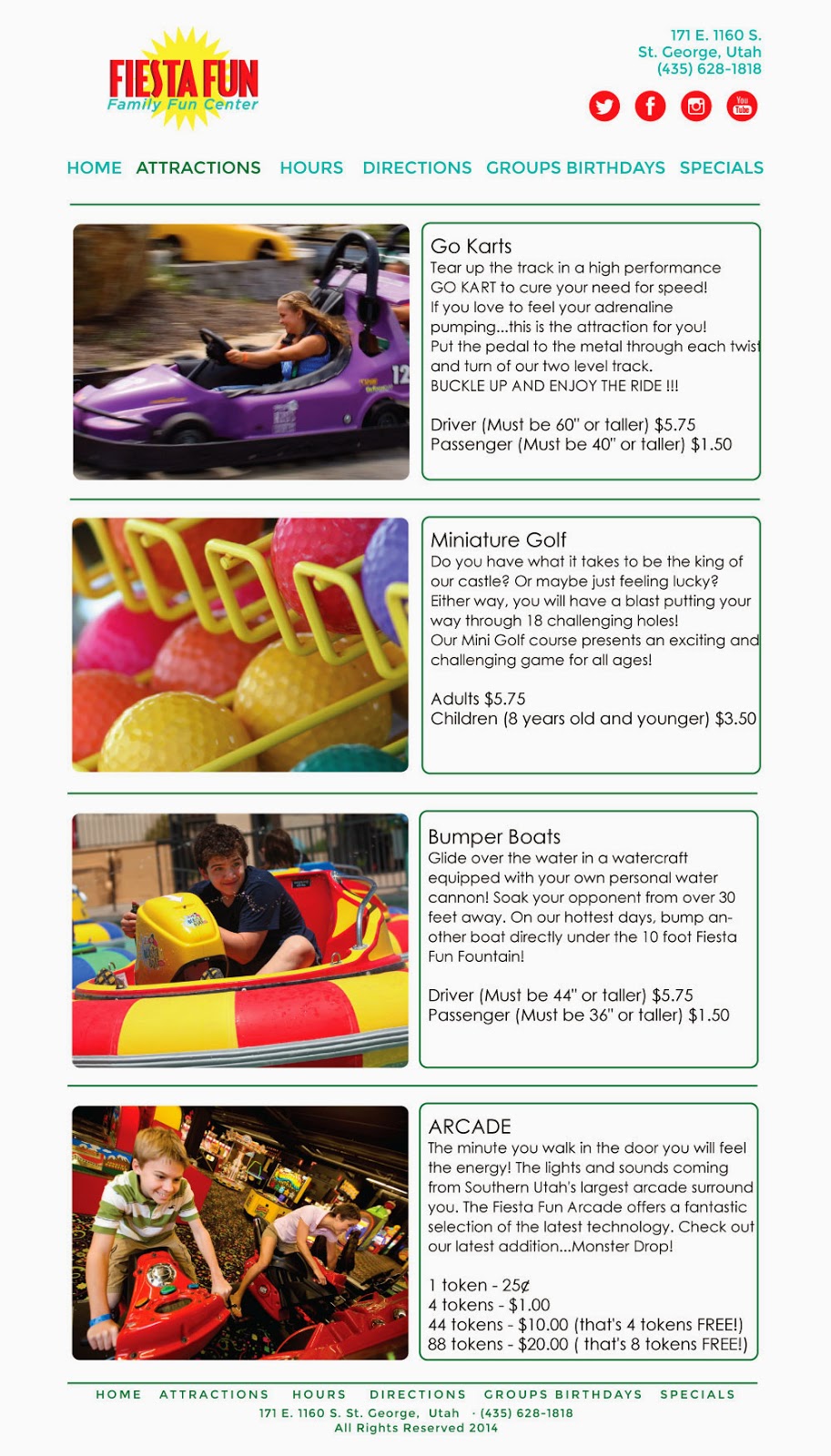
Target Audience- Families with children 14 and younger.
Cognitive- Family Friendly, Fun, Convenient, Affordable, Entertainment
Emotion-Happy,Excited,
Practicality-Entertainment for all ages.
Fun & Utility
Message-Where the FUN never sets.
Need-Party place, Entertainment morning, afternoon, evening
How to get it out there
I was in charge of working on the website. The old website was full of masked photos and out of date colors with bad text alignment. When designing the website I stayed with the style guide and tried to make the new site simple with the focus of minimal photos that are bright and fun. I wanted the information to be simple, clean, and easy to find. The Law of Similarity and Law of Proximity were used in the design of this webpage to help the flow of the page.

























